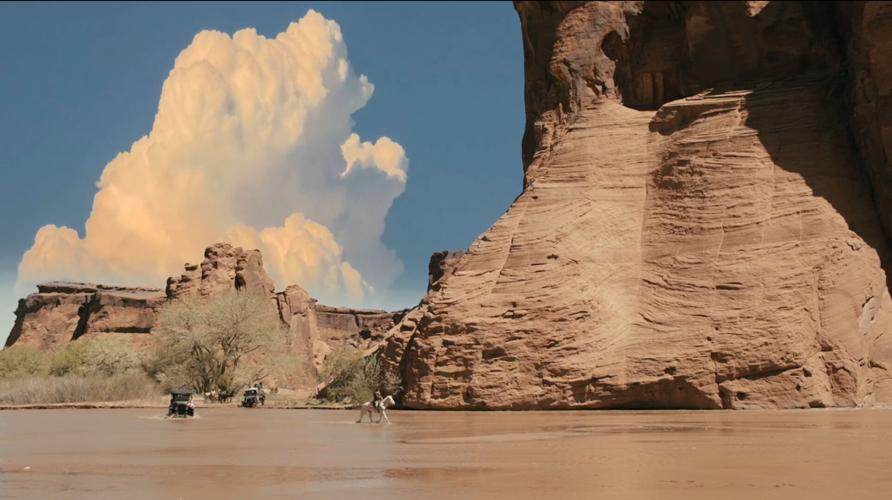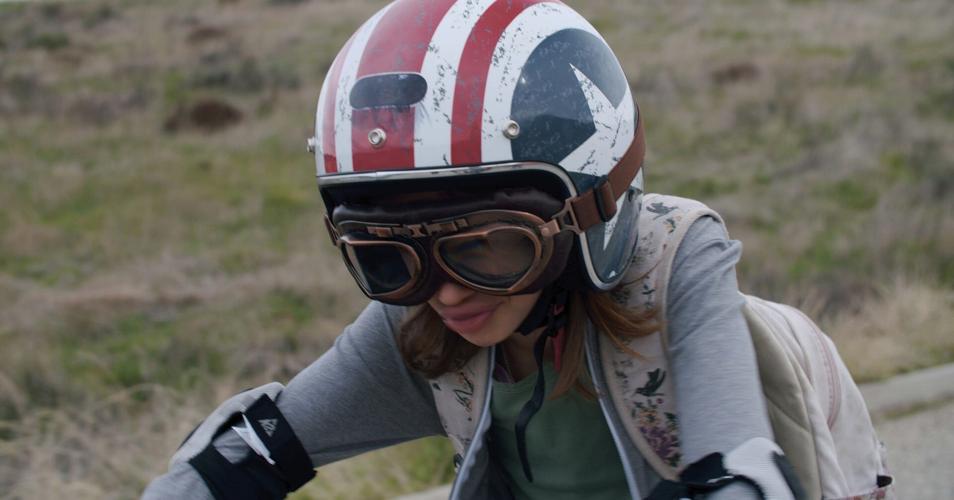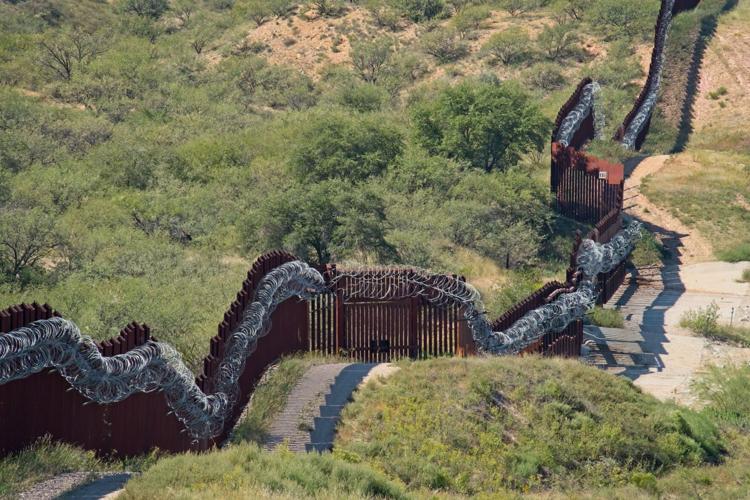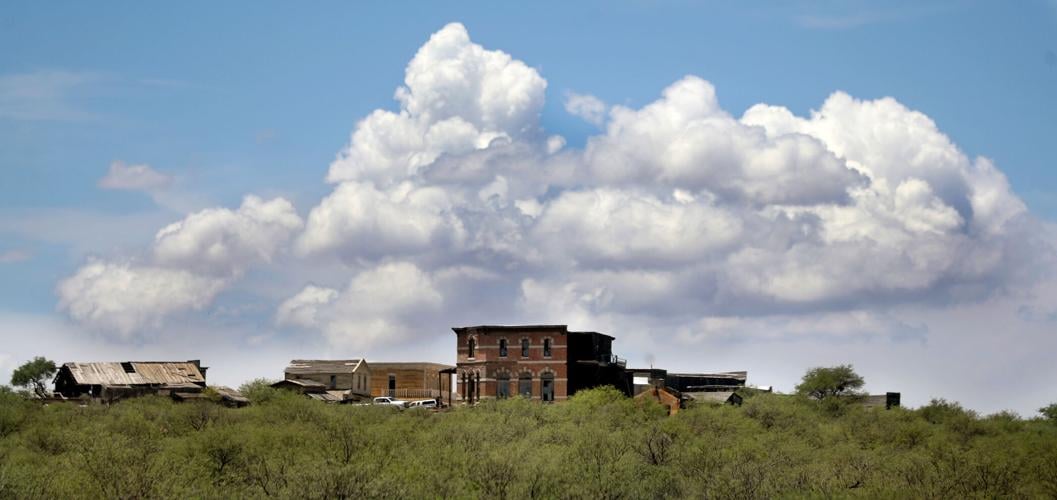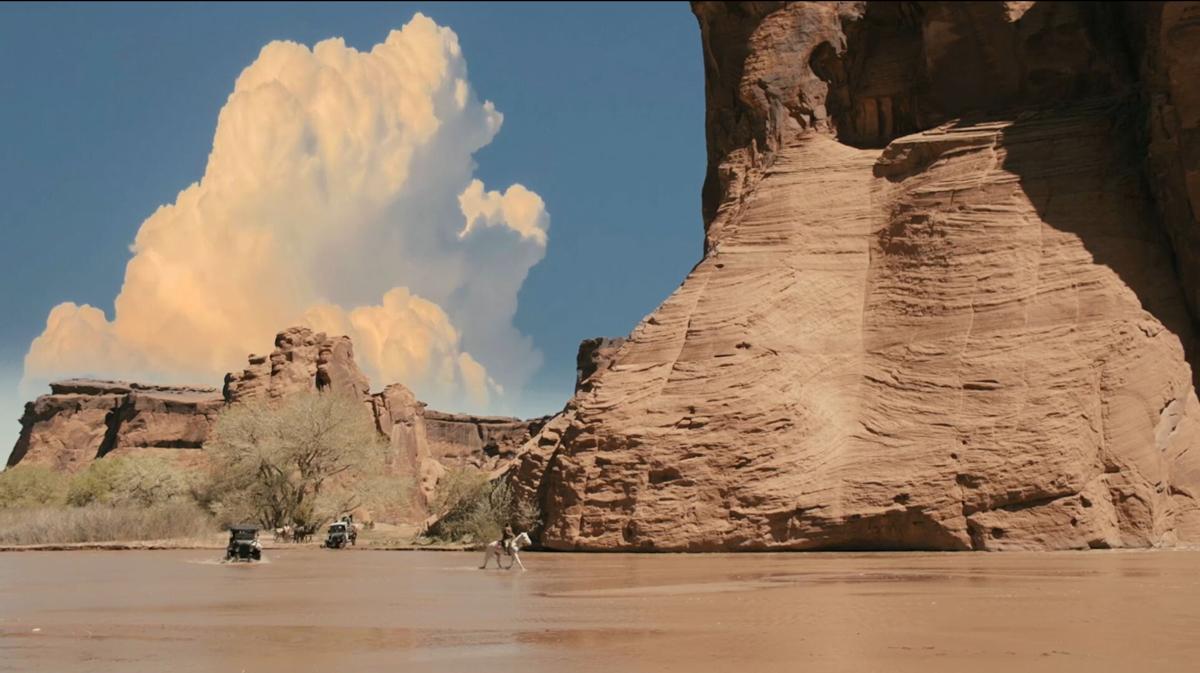One of the greatest things about a film festival is its ability to transport you to different places in space and time without you ever leaving the comfort of your theater seat.
One minute, you’re traversing canyons by horse, on the hunt for your latest archaeological dig site. The next, you are in deep space, gingerly navigating your way through a treacherous minefield of your own making.
With more than 36 indoor and 13 outdoor screenings planned, and 130 films in all, this year’s Arizona International Film Festival is ready to send you to the edge of the cosmos and back with an eclectic selection of cinematic works. Several of the scheduled films were made right here in Arizona.
Here are 10 reasons why this year’s festival, taking place Wednesday, April 20-May 1, is worth your attention.
1. Longevity
There is a reason it’s called the Arizona International Film Festival and not the Tucson International Film Festival.
When Giulio Scalinger, director of the festival since its inception, and his board held the first film festival in 1990, at the newly renovated and reopened Temple of Music and Art, “there was nothing,” Scalinger said. “There were a couple of smaller events, but we basically were the first festival in the state.”
Today, the festival count in Arizona “is like Starbucks,” Scalinger said. “There is one on every corner.”
Yet the Arizona International Film Festival continues to thrive as one of the largest and most expansive film festivals in the city.
“We get submissions from all over the world,” Scalinger said. “We thought there might be fewer submissions this year, but we had more than ever.”
2. ‘Canyon del Muerto’
Festival organizers are kicking off this year’s screenings with a full-length feature, filmed about seven hours north of Tucson on the Navajo Nation.
“Canyon del Muerto” follows the career of Ann Axtell Morris, a pioneering female archeologist, who, along with her husband, Earl Halstead Morris, excavated several sites, including Canyon del Muerto, in what is now Canyon de Chelly National Monument, on the Navajo Nation in the 1930s.
Scenes from the film, directed by Colorado native Coerte Voorhees, were shot on location at Canyon de Chelly, a feat in a part of the country where permission to film commercially is rarely given.
Scalinger said Navajo Nation President Jonathan Nez, who has a cameo in the film, will be attending the screening.
“Canyon del Muerto” begins at 7:30 p.m. on April 20 and tickets are $13.64 through foxtucson.com.
3. Your choice of venues
In addition to the Fox, 17 W. Congress St., the Arizona International Film Festival will be screening features and shorts all over town, including at Main Gate Plaza, 943 E. University Blvd.; The Loft Cinema, 3233 E. Speedway; and the Hotel Congress Plaza, 311 E. Congress.
See the immigration story through the eyes of young Mexicans, working their way from the strawberry fields of Oxnard, California, to better lives in “Mariposas del Campo,” at the Screening Room, 127 E. Congress, at 4 p.m. Saturday, April 30.
Watch a suspected madman play mind games with strangers atop Mount Lemmon in the psychological thriller, “8000 Ft Up,” at the Mercado Annex, 267 S. Avenida del Convento, at 7:30 p.m., Monday, April 25.
Or check out a documentary on the quirky, transient community that makes up the town of Quartzsite, Arizona, during its peak season in the “One Road to Quartzsite,” screening at Cactus Carpool Cinema, 6201 S. Wilmot Road, at 8 p.m., Sunday, May 1.
Admission costs vary. Visit filmfestivalarizona.com for more information.

Monsoon storm clouds begin building over the Mescal Movie Set, which will be featured as part of this year's Arizona International Film Festival.
4. Mescal movie set tour
Take a break from watching movies to walk among the Old West buildings of cinema’s past on a film festival bus tour of the Mescal Movie Set in Benson on Saturday, April 30.
Long known as the sister site to Old Tucson Studio, the Mescal Movie Set was home to more than 80 Westerns over the course of several decades, including the popular ’90s titles, “Tombstone” and “The Quick and the Dead.”
The set was purchased in 2021 after falling into disrepair. Its new owners have since been utilizing a small army of volunteers to restore it to its former glory.
A bus will depart from Tucson at 8 a.m. and return at 1 p.m. Admission is $30 per person through tucne.ws/1k8j.
Scalinger said they plan to include more elements of film tourism at future festivals.
“People like to go to places where things were shot,” he said. “Mescal is definitely one of those places, but a lot of films were made right here in Tucson.”

A young girl abandoned by her mother befriends another mother who is grieving the loss of her son in the film short, “Hurricane.”
5. Lots of shorts
If you are looking for a little variety in your film festival schedule, you can opt to attend one of its many movie short film screenings.
There is an animation shorts night at The Screening Room on April 22 and an experimental shorts program at the same theater on April 25.
Other shorts screenings include a night for Arizona shorts, global shorts and dramatic shorts, including the 19-minute film “Hurricane,” about a young girl abandoned by her mom and the friendship she develops with a mother who is grieving the loss of her son.
“It is a delight watching shorts,” Scalinger said. “You are telling a story in 20 minutes. You have to be very creative.”

“American Wall” looks at the myriad views coming from communities that live along the U.S.-Mexico border.
6. Cine Sonora
Among the shorts sessions slated for this year’s festival is Cine Sonora, a celebration of short films from Sonora, Mexico, to be held at the Mercado Annex starting at 7:30 p.m. on Friday, April 22.
Five films will be featured, including “El Pozo,” about a young girl who falls into an enchanted well in war-torn Mexico, and “La Poeta del Ring,” about a female boxer ready for the match of a lifetime in Las Vegas.
The shorts join full-length features and documentaries about Mexicans and Mexican-Americans living on both sides of the border, and one documentary, “American Wall” about the communities that reside along the wall that divides the two countries (screening at the Mercado Annex at 7:30 on Tuesday, April 26.)
Scalinger said the board plans to expand its partnership with festivals held in Mexico in the future, and hopes to make Spanish-language cinema a more expansive theme in 2023.

The documentary, “Mariposas del Campo” follows immigrant students as they attempt to move from working the strawberries fields of Oxnard, California, to better lives.
7. Zoom panels
The Arizona International Film Festival canceled all of its activities in 2020 and moved many of them online in 2021, due to the COVID-19 pandemic.
“It was very difficult,” Scalinger said. “When screening films, the numbers weren’t as high as we thought they could be. It just wasn’t us.”
What did work were the panels and discussions with filmmakers and cinema experts that were held over Zoom.
“We had as many as 400 people logged in at times,” Scalinger said. “Our in-person panels at previous festivals were always much smaller. It was pretty exciting.”
It’s why the festival board decided to keep the Zoom format when holding panels in 2022.
Turn the app that you use to hold meetings with your coworkers into a tool for learning by attending festival panels ranging from Mexican cinema to Panavision camera equipment to British filmmakers.
Scalinger said the details were still being worked out as of press time, but that all Zoom panels would be listed on filmfestivalarizona.com and free to attend.

“Nowhere Man and a Whiskey Girl” looks at the lives and tragic ends of Derrick and Amy Ross, the husband-and-wife musical duo known as Nowhere Man and a Whiskey Girl.
8. ‘Nowhere Man and a Whiskey Girl’
Among the films of local interest is the documentary about Derrick and Amy Ross, the husband-and-wife musical duo from Bisbee known as Nowhere Man and a Whiskey Girl, who died in 2013 under tragic circumstances.
Derrick and Amy were much loved in Bisbee and Tucson and played regularly at venues like Plush and Delectables on North Fourth Avenue.
“We expect that will be our biggest film of the festival, beyond opening night,” Scalinger said.
The film screens at 7:30 p.m. on Saturday, April 23, at the Mercado Annex. Tickets are $10.
9. Filmmakers in attendance
Browse the schedule of films being screened this year at the film festival and you’ll notice a good number of them come with the line, “filmmaker in attendance” attached.
Scalinger estimates more than 60 directors will be flying to Tucson to attend this year’s event.
“I have a filmmaker coming from South Korea,” Scalinger said. “His film is only 10 minutes long, but this is his first festival. He wants to be here.”
Scalinger said the essence of any good festival, especially the Arizona International film festival, is having filmmakers on-site. Audience members get to ask questions about what they’ve just seen and filmmakers get to network with one another.
“They interact a lot,” he said. “It is amazing how many filmmakers who attend the festival end up working on projects together.”
10. Last film festival before summer
With summer fast approaching and all of the other major Tucson-area film festivals over and done until the fall, this will be your last chance to experience such a wide range of cinematic works in such a short amount of time.
“We tell people that this is a unique opportunity to see films from around the world,” Scalinger said. “I believe there is a film for each person at the festival. You just have to find it.”
Photos: Moviemaking at Old Tucson Studios

Visitors at Old Tucson often have a chance to watch actual movie or television filming. Shown in the foreground, they watch actor Cameron Mitchell at work in July 1977. John Wayne, Paul Newman, Glenn Ford, Clint Eastwood and Kirk Douglas are among the stars that have filmed there.

James Coburn during production of "The Last Hard Man" at Old Tucson on November 6, 1975.

Lee Marvin, right, talks with Jack Palance during a break in the filming of "Monte Walsh" at Old Tucson in 1970. For this film the production company built the town of Harmony 35 miles east of Tucson. The set there is now the Mescal location and still used today.

Old Tucson Studios in 1980.

Night scenes for the John Wayne classic, "Rio Bravo" at Old Tucson on May 24 1958.

Building the soundstage at Old Tucson on June 11, 1968.

The cast of the televsion show "High Chaparral" on set at Old Tucson in May, 1968. From left, Henry Darrow, Leif Erickson and Don Collier, who lived in Tucson and showed up in local TV commercials later in life.

Glenn Ford at Old Tucson on October 1966 during production of "Pistolero" Upper Sabino Canyon was also used for filming. The classic Western actor also appeared as the bad guy in the original "3:10 to Yuma," also filmed at Old Tucson.

Dean Martin hangs on to Ricky Nelson as John Wayne takes a swing with a blanket on the set of Rio Bravo at Old Tucson Studios in 1959.

Actor Max von Sydow gets makeup on the set of "Reward" on June 15, 1964. A section of the Old Tucson in Tucson Mountain Park was remodeled to depict a street in a small Mexican town. Two of the movie's scenes were filmed at Old Tucson.

Actor John Saxon, left, and director John Huston during production of "The Life and Times of Judge Roy Bean" at Old Tucson in December, 1971. The film starred Paul Newman.

An Andy Warhol Western? Yep. It was "Lonesome Cowboys" and it was filmed at Old Tucson in 1968.

The streets of Old Tucson transformed for the movie "McLintock!" starring John Wayne and Maureen O'Hara in December, 1962.

A film camera truck pulls a stagecoach on the set of "The Lone Ranger" near Old Tucson in 1957.

Sidney Poitier with Lilia Skala on the set of "Lilies of the Field" Movie in December 1962. Poitier was the first African American actor to win the Oscar for Best Actor for his portrayal of Homer Smith in the movie.

On the set of "Gunfight at the O.K. Corral" in 1957. It starred Burt Lancaster and Kirk Douglas and was directed by John Sturges, who directed several other movies at Old Tucson.

Actor Paul Newman has his photo taken by his wife Joanne Woodward during a break in filming of "Hombre" at Old Tucson in 1967. Woodward said, "Being married to Paul is being married to the most considerate, romantic man." Newman died in 2008.

Director John Sturges, left, confers with actor Clint Eastwood during production of "Joe Kidd" at Old Tucson on December 2, 1971. Sturges was a well-known action film director with such hits as "The Great Escape" and "The Eagle Has Landed."

Noah Beery Jr. at Old Tucson on June 5, 1968. He played James Garner's father in the TV series, "Rockford Files."

Walter Brennan snd John Wayne during filming of Rio Bravo in 1958. These ruins are leftover walls from the Mexican Village built for the film "Arizona." John Wayne filmed four movies at Old Tucson.

A building is expanded during set improvements for the movie "El Dorado" starring John Wayne and Robert Mitchum at Old Tucson on September 28, 1965.

The church is changed using adobe bricks during set improvements for the movie "El Dorado" starring John Wayne and Robert Mitchum at Old Tucson on September 28, 1965.

Robert Shelton (left) then president of Old Tucson talks with art director George Chan (right) from 20th Century Fox during building construction in 1964.

A scene from the 1940 film "Arizona" for which Old Tucson was built. The look and feel of the town was more authentic than any Western filmed to that point..

James Arness rides through Old Tucson as Sheriff Matt Dillon in TVs Gunsmoke. Gunsmoke ran from 1955-1975, though most episodes were filmed in Southern California.

Kirk Douglas shows other actors how to draw and whirl during the filming of "Posse" at Old Tucson in October, 1974. Douglas was the star and director of the film.

Actor Josh Brolin, who played Jimmy Hickok in the television show "The Young Riders" on the set at Old Tucson Studios in August, 1989. Brolin is an accomplished actor, with credits like "No Country for Old Men."

Moses Gunn (left) and Merlin Olsen (right), rehearse a scene from one of the many episodes of "Father Murphy" filmed at Old Tucson from 1981-83. Olsen was a Pro Hall of Fame tackle for the Los Angeles Rams.

Actress Michelle Carey (best known for her role in "El Dorado" with John Wayne) on the set of "Scandalous John" at Old Tucson in November, 1970. Carey spent most of her career in supporting TV roles, including three appearances in "The Wild Wild West."

John Wayne, on the set of "Rio Lobo" in Old Tucson in June, 1970, confessed to Tucson Citizen movie critic Micheline Keating that he was nervous about the Academy Awards show the next night. He won Best Actor for "True Grit." Rio Lobo was his last film at Old Tucson.

An extra catching a snooze in the warm sun on the set of "McLintock!" at Old Tucson in 1962.

Writer-director Burt Kennedy, right, on the set of "Young Billy Young," aka "Who Rides with Kane" at Old Tucson in July, 1968. Actor John Anderson is at left. Kennedy, a decorated WWII veteran, also directed "The War Wagon," "Support Your Local Gunfighter," and episodes for several TV show.


